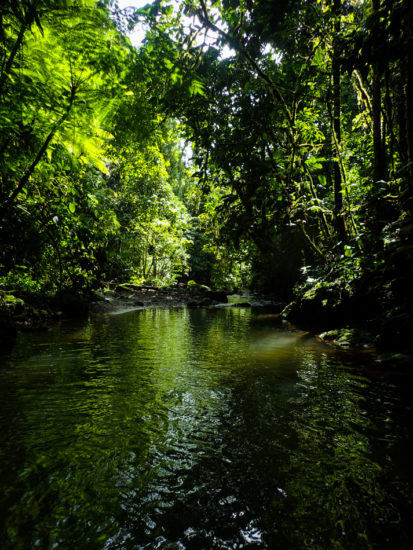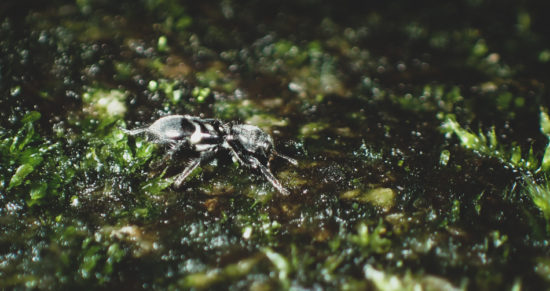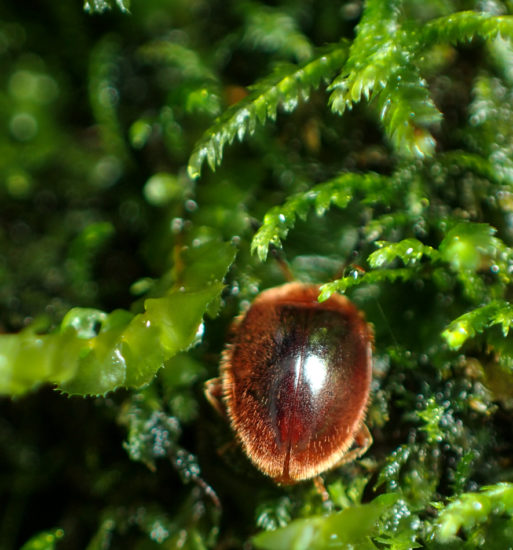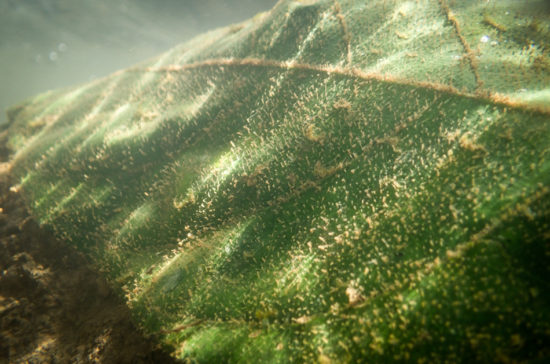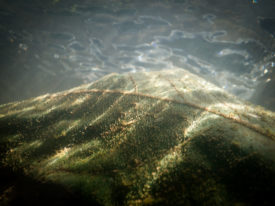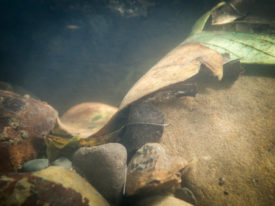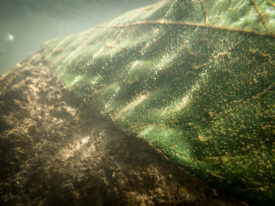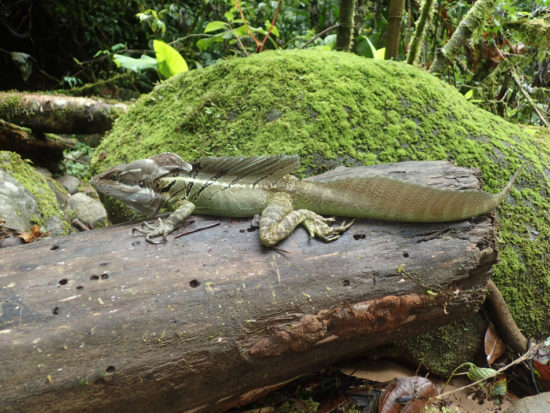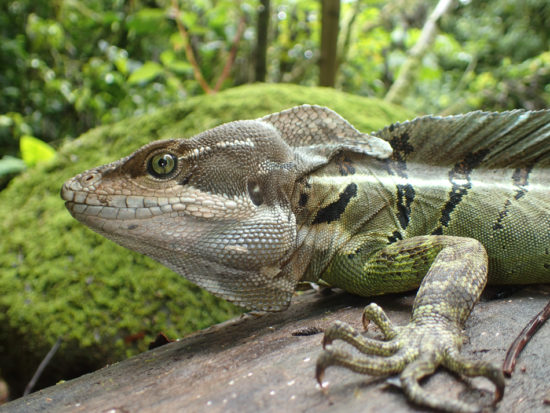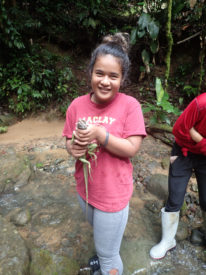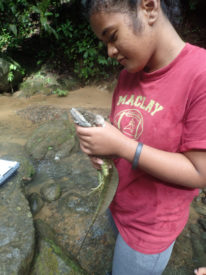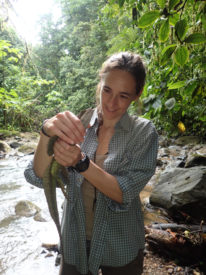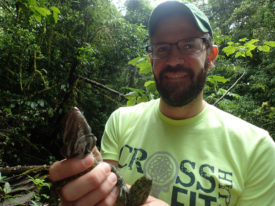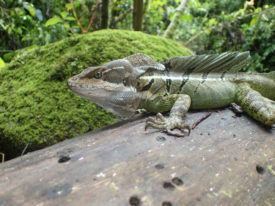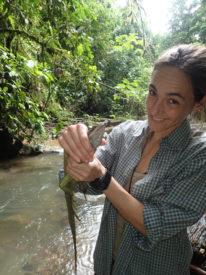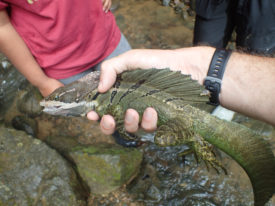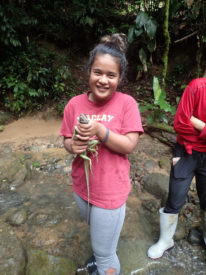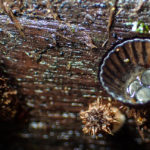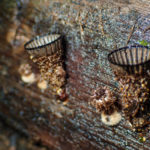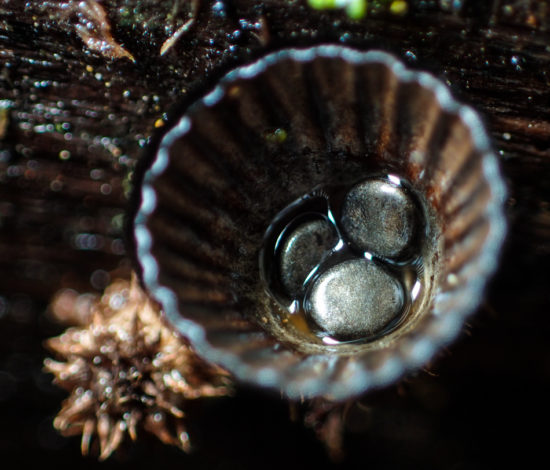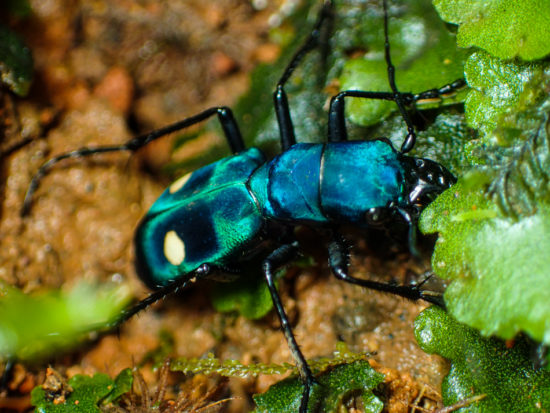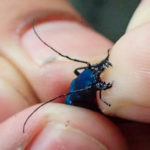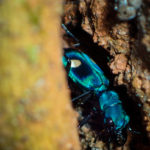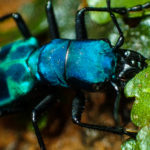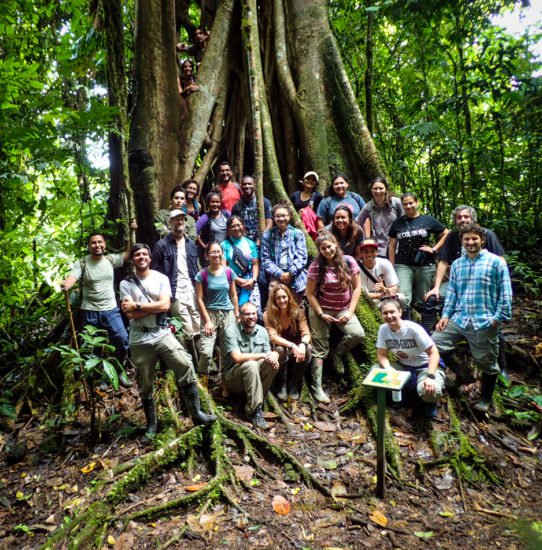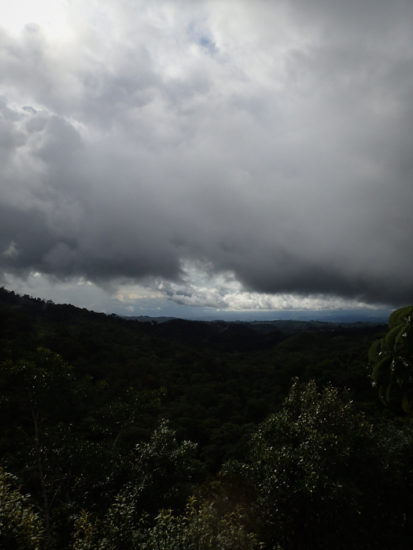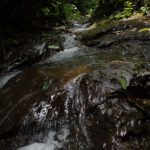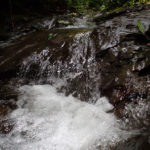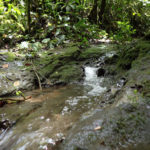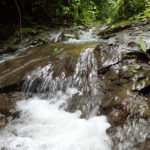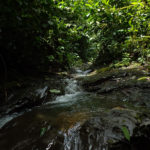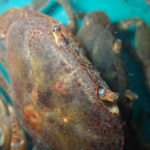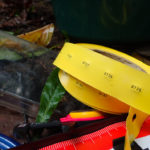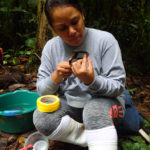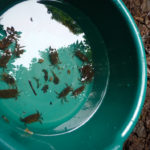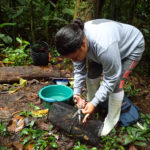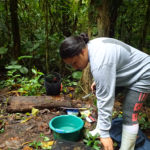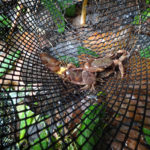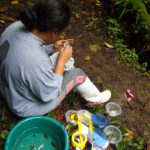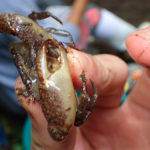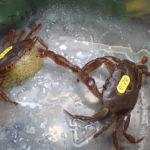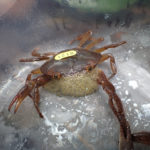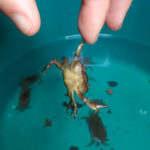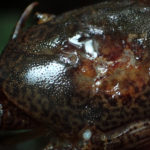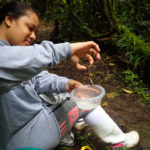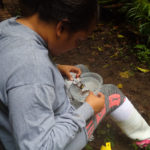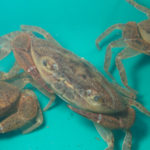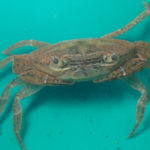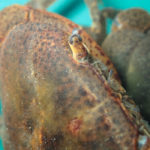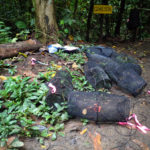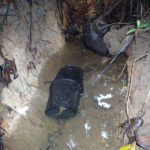Tag Archives: Las Cruces
Beetles in moss
Leaf litter in Río Java
Common basilisk
Macy, an REU student this summer (not pictured), discovered a large male Common Basilisk (Basiliscus basiliscus – aka Jesus Christ Lizard) under a rock while surveying for spiders. They get their name from “running” on water to escape, but this individual seemed to be too cold and wedged in hiding. I pulled it from the rock and we took some photos—only Juliet, my student, and another research mentor, Patricia, braved holding it.
Bird’s nest fungus macro
A few years ago I featured some Bird’s Nest Fungus – a basidiomycete that looks a bit like a bird’s nest with eggs. Here are a few images with a different camera and macro ratio.
Spotted tiger beetle
A few more images of the tiger beetle (Carabidae, Cicindelinae, Pseudoxycheila tarsalis) commonly found in Las Cruces.
Cristian braves handling it—the serrated jaws pierce his skin. There is a horn extending from the labrum that is also serrated.
REU-LSAMP Crew
Tower view at Las Cruces
West Branch of Río Java
Marking crabs
June, one of the NAPIRE students, measures and marks crabs (Allacanthos pitteiri) she’s caught with baited minnow traps. Her project has a lab focus too: she is investigating size and sex differences in coarse particulate organic matter (leaf) shredding behavior by presenting male and female crabs that vary in size with stream conditioned leaves and measuring how much they consume, or shred. This parallels a project another student performed in 2013, Joseph Jack, although Joseph varied leaf species and conditioning time.
Last year, Jerry studied predation risk in crabs and measured crab densities in stream pools. While he marked the crabs with nail polish as a mark-recapture method, the small labels June used have individual numbers (her mentor, Anne Brasher, brought them and has used them extensively with snails), which is a powerful tool.
An interesting observation: some of the crabs seemed to have rust-colored lesions on their carapace that look similar to lesions we often found on crayfish (Orconectes obscurus) caused by a chitin-eating bacteria, isolated (or at least studied) by Adam Leff’s lab at Kent State.

